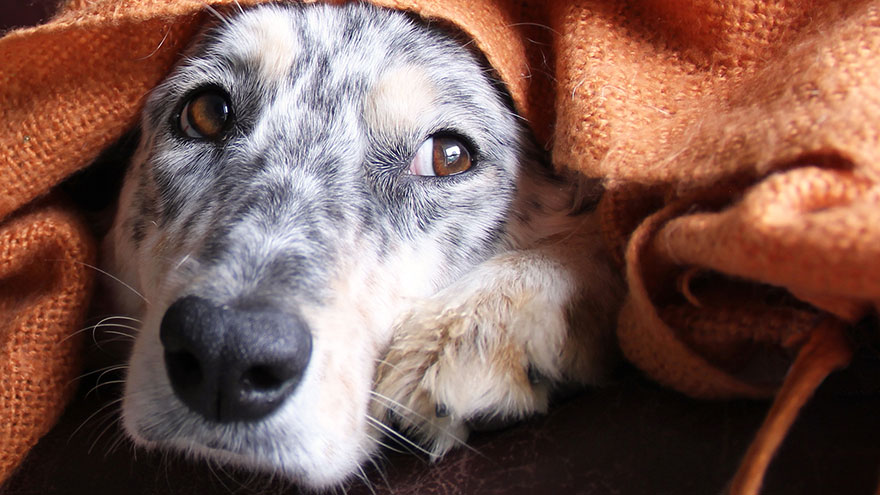How to Treat Anxiety in a Dog
Symptoms of anxiety in dogs are somewhat different than for people with anxiety. A dog displays anxiety by pacing, panting, drooling, barking constantly, or relieving himself in the house in areas he normally would not. Dogs become anxious for numerous reasons, such as moving, thunderstorms, a member of the household leaving, discord in the house, and other animals. Many dogs do not do well when their environment changes and they can become anxious, but it is normally temporary as they adjust.
3 Steps to Treat Anxiety in a Dog

1. Purchase some plain leaf chamomile tea and steep it for about five minutes.
Allow it to cool before giving any to your dog. Chamomile is a safe herb for your dog that can help calm her and induce sleep. Chamomile has the same effect on dogs as it does on people. Using a clean eyedropper, give your dog about five to 10 full droppers full. Most dogs like the taste of chamomile, but if your dog refuses it, mix some pure honey in the tea and then offer it to your dog. Dogs love honey and that will be a sure way to get her to take the tea.
2. Get some plain valerian root capsules from your local health food store.
You can use this instead of chamomile if your dog is displaying a lot of anxiety. Valerian is a bit stronger than chamomile. A good formula to follow when dosing your dog for herbs is take the weight of your pet and divide it by 150 pounds, which is the weight of an average person. If your dog weighs 30 pounds, the formula would be to divide 30 by 150, which equals 20 percent of the recommended dose for a person. If the label says two capsules three times per day, your dog would get 20 percent of this, so your dog would get about one capsule per day. It is always best to begin with a smaller dose.
3. Offer your dog treats when he is calm.
This can be useful in letting him know there is no reason to be anxious. Do not coddle your dog when he is anxious because this will reinforce in his mind that there is something to be fearful of. Be calm and act as if the situation is normal. Your dog takes his lead from you. If you are anxious, your dog will be anxious; but if you are calm, it will let him know that everything is OK.
Tips and Warnings
- Some breeds are more prone to anxiety than others. These include, basset hounds, Great Danes, short-haired pointers, German shepherds and several of the terrier breeds.
- Dogs which display severe anxiety that herbs and a calm environment do not help may need medication that your veterinarian can prescribe.
You Might Also Like :: Diseases of Australian Cattle Dogs

